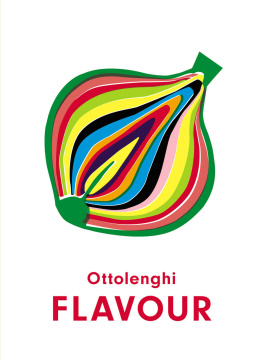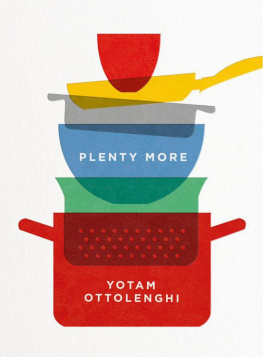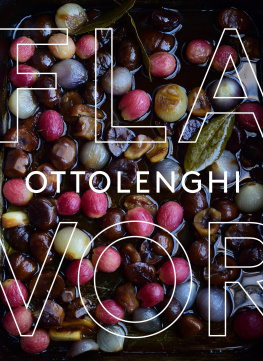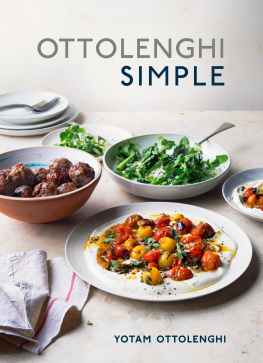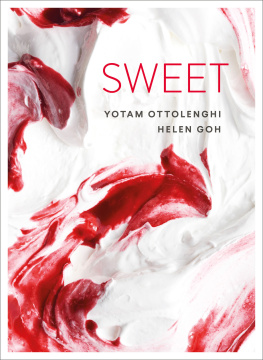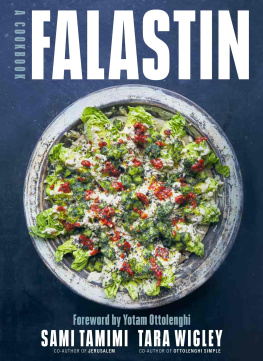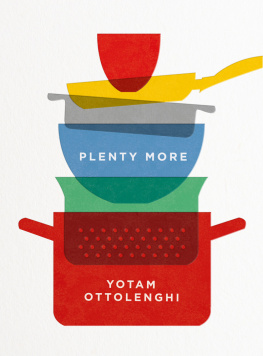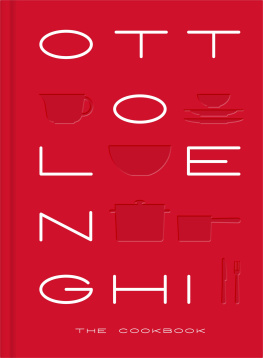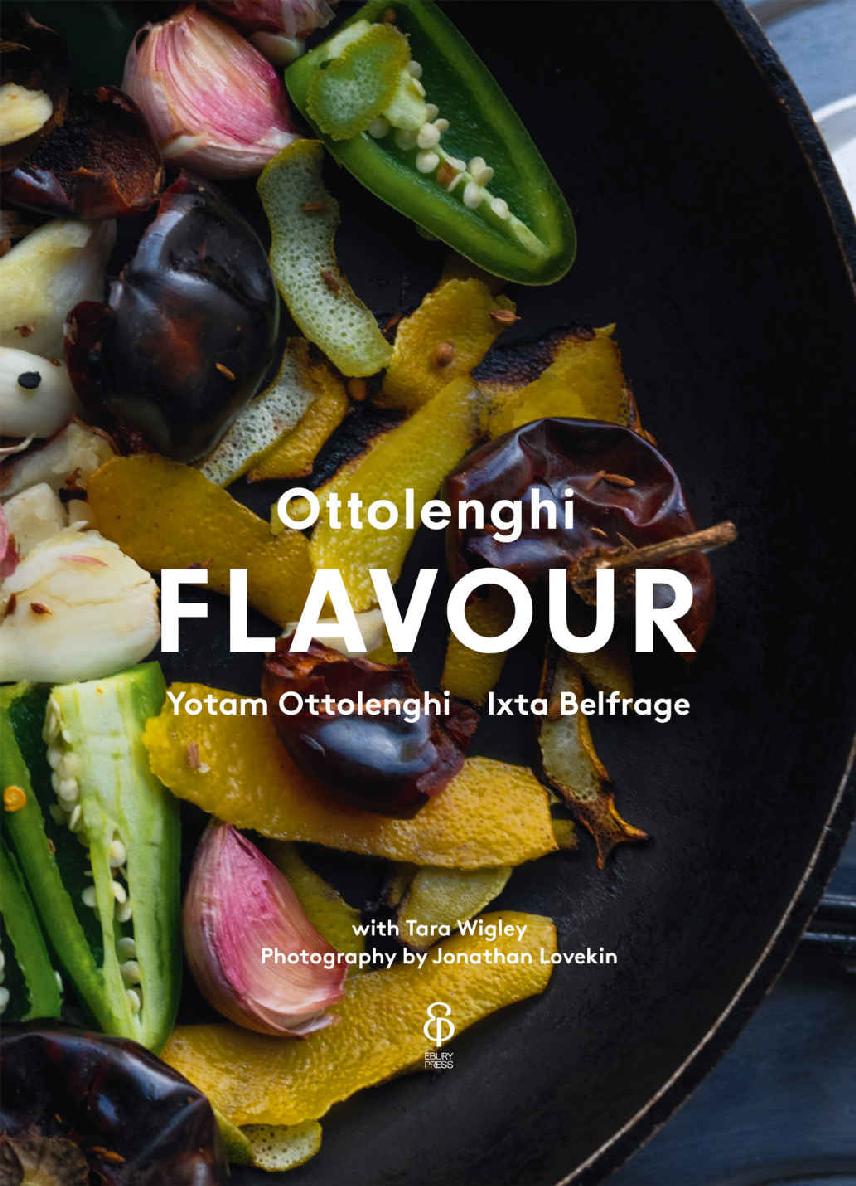
CONTENTS
About the Authors
Yotam Ottolenghi is the restaurateur and chef-patron of the four London-based Ottolenghi delis, as well as the NOPI and ROVI restaurants. He is the author of seven best-selling cookery books. Amongst several prizes, Ottolenghi SIMPLE won the National Book Award and was selected as best book of the year by the New York Times . Yotam has been a weekly columnist for the Saturday Guardian for over thirteen years and is a regular contributor to the New York Times . His commitment to the championing of vegetables, as well as ingredients once seen as exotic, has led to what some call The Ottolenghi effect. This is shorthand for the creation of a meal which is full of colour, flavour, bounty and sunshine. Yotam lives in London with his family.
www.ottolenghi.co.uk
@Ottolenghi
Ixta Belfrage spent her youth dipping her fingers into mixing bowls in places as far-flung as Italy, Mexico and Brazil and so became an expert without a title. She began her culinary career proper at Ottolenghi's NOPI restaurant, before moving to the Test Kitchen, where she has worked for Yotam Ottolenghi for four years, contributing to his columns in The Guardian and The New York Times . She lives in London, where she makes regular guest chef appearances in some of the citys top restaurants. Flavour is her first book.

INTRODUCTION
I have never been shy about my love of vegetables. I have been singing the praises of cauliflowers, tomatoes, lemons and my old friend the mighty aubergine for over a decade. I have done this on my own in cookery demos, on book tours and in the pages of books and magazines; and I have done this in a group, in lively discussions with colleagues in the restaurants and in the test kitchen. Its become my mission to present vegetables in new and exciting ways and I have embraced it with nothing but enthusiasm.
Still, in the spirit of openness, I must confess to a small niggling doubt that creeps in now and then: how many more ways are there to roast a cauliflower, to slice a tomato, to squeeze a lemon or to fry an aubergine? How many more secrets are there to be discovered in a handful of lentils or a bowl of polenta?
The answer, I am delighted to report, is many. My journey of discovery into the world of vegetables by which I mean anything, really, which originates from a plant has taken me in all sorts of directions that I simply hadnt imagined. If my first vegetable book, PLENTY , was the honeymoon period, a great big party where certain vegetables peppers, tomatoes, aubergines, mushrooms got a whole chapter to themselves, PLENTY MORE was all about process; recipes were divided into the ways in which the vegetables were treated: mashed or tossed or grilled and so forth. FLAVOUR is the third book in the series: its about understanding what makes vegetables distinct and, accordingly, devising ways in which their flavours can be ramped up and tasted afresh; its about creating flavour bombs, especially designed for veg. This is done in three ways.
PROCESS, PAIRING, PRODUCE
The first is to do with some basic processes that happen to vegetables when they are cooked, or to some key ingredients that they are cooked with. The second is about pairing : what you match a vegetable with to draw out one of its distinct qualities. The third is to do with the produce itself: the sheer depth of flavour that certain ingredients naturally possess that allows them to play a starring role in a dish, more or less by themselves, or to prop up and brightly illuminate other vegetables.
So, after PLENTY and PLENTY MORE, FLAVOUR is PLENTY 3 , if you like, or P3 , with the three ps (process, pairing and produce) being the key concepts for explaining what makes certain vegetable dishes taste so good. Let me give you some examples to illustrate this, using some of my favourite ingredients: celeriac (to demonstrate process), tamarind and lime (to think about pairing) and mushrooms (to show how it can be just the produce itself doing the work).
First, process . Three recipes in this book involve cooking celeriac whole for more than two hours, then dressing and serving it in different ways. During the initial cooking of the celeriac, and before any other ingredient is added, something truly magical happens. Much of the water in the celeriac evaporates, its flesh turns from white to golden-brown and it becomes sweeter and richer. This browning and caramelising, which happens to many veg (and non-veg) when they are cooked in a certain way, is a key process that teases out flavour from them. Whatever you choose to do to the celeriac after this is less important. Indeed, you dont need to do anything more to it at all, if you dont want to; the browning process is such a flavour bomb that its heavenly eaten at this stage, cut into wedges and served with a squeeze of lemon or a dollop of crme frache. Other processes which have a similarly terrific effect are charring, ageing (which is mostly done to ingredients well before they reach your kitchen) and infusing, all of which transform and elevate vegetables to great heights.
HOW MANY MORE WAYS ARE THERE TO FRY AN AUBERGINE? THE ANSWER, I AM DELIGHTED TO REPORT, IS MANY

Illustrating my concept of pairing is a little less straightforward because every time you cook you obviously pair ingredients together. What I have done, though, is identify four basic pairings acidity, heat (as in spicy heat), fat and sweetness which are fundamental. Introducing one or more of these key pairings to a dish has the effect of showing the vegetables (or fruit) they are partnered with in a completely new light. The ASPARAGUS SALAD WITH TAMARIND AND LIME ( and possibly a poached egg. I have made this same point myself in the not so distant past. What I have learned more recently, though, is that asparagus can actually stand its ground also when paired with robust and purportedly dominant ingredients. It does this particularly well when the paired element is complex and multi-layered. In the salad I mentioned, raw asparagus is paired with three sources of acidity, each with its own particular characteristics: lime juice, vinegar and tamarind. All these layers and iterations of sour come together in a single harmony which heightens and alters the taste of raw asparagus in a way that really opens your eyes to the vegetables.

The third concept is to do with produce . Vegetables, famously, are not as good at imparting flavour as meat and fish are, because of their high water content and the low levels of fat and protein they contain. Some, though, are absolutely brilliant at it. Our SPICY MUSHROOM LASAGNE ( and fruit. All four are the types of produce that you can rely on to do some seriously hard work for you in your kitchen.
While making a delicious recipe can be simple, great cooking is never the result of one element in isolation it is the interplay of different types of processes , pairings and produce in one dish that elevates and makes it exquisite. Using the lasagne example again, this dish clearly heavily relies on mushroom umami (produce), but it also benefits greatly from an interplay of different fats (pairing) and the complex art of ageing cheese (process). The structure of the book, in which each chapter highlights one particular kind of process, pairing or produce, is, therefore, not there to undermine or deny the existence of many other elements in a recipe; its purpose is to highlight the USP of a dish, a particular element at the core that makes it particularly delicious or special.
Next page
